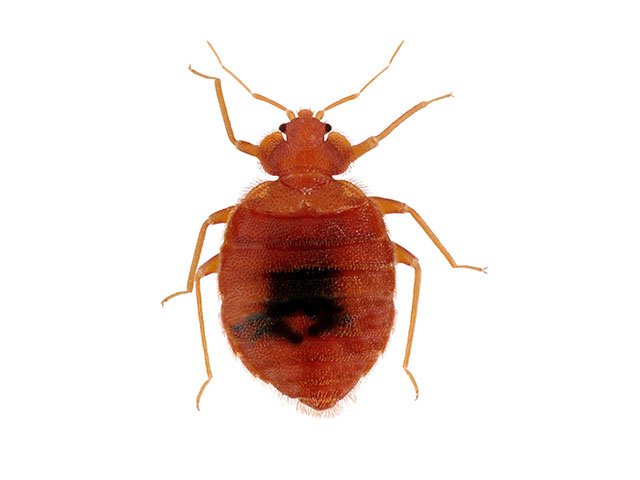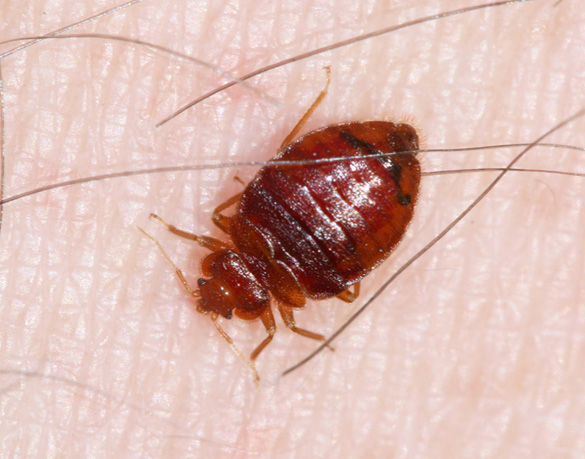Professional Bed Bug Exterminator Services for a Pest-Free Home
Professional Bed Bug Exterminator Services for a Pest-Free Home
Blog Article
Obtain Enlightened Regarding the Sorts Of Bug Control Methods and Their Benefits for Home Owners
Recognizing the various insect control methods available to homeowners is essential for effective parasite monitoring. Property owners who are educated can make calculated options that not only address pest problems but additionally improve the general top quality of their living atmosphere.
Chemical Bug Control Techniques
Chemical pest control methods are a critical element of incorporated bug monitoring techniques for homeowners looking for efficient solutions to pest invasions. These approaches involve the application of chemical materials developed to remove or hinder insects that threaten personal home, health and wellness, and comfort. Usual chemicals made use of consist of pesticides, herbicides, fungicides, and rodenticides, each customized to target particular bugs.
The key benefit of chemical parasite control is its quick efficiency; several formulations give prompt outcomes, reducing pest populaces considerably quickly. Furthermore, advancements in chemical formulas have actually brought about products that are more environmentally pleasant and have reduced poisoning degrees for non-target organisms when used appropriately.

Organic Parasite Control Techniques
All-natural insect control techniques have gotten prestige as homeowners seek much safer and much more lasting alternatives to traditional chemical approaches. Organic pest control methods make use of natural killers, bloodsuckers, or microorganisms to take care of insect populaces effectively. This method is not only environmentally pleasant yet likewise reduces the risk of injury to non-target varieties, consisting of useful pests and wildlife.
One of the most typical biological control approaches involves introducing all-natural predators right into the environment. As an example, ladybugs can be utilized to control aphid populaces, while nematodes target soil-dwelling insects like grubs. In addition, parasitoids-- microorganisms that live on or within a host-- can be utilized to regulate certain insect types by laying eggs inside them, ultimately bring about their demise.
One more strategy is making use of biopesticides, which are originated from all-natural materials such as minerals, plants, or bacteria (bed bug exterminator). These items can efficiently target pests while presenting marginal danger to people and pets. In general, biological pest control methods offer home owners with a reliable means of insect administration that straightens with ecological concepts, promoting a healthier living setting while reducing dependence on synthetic chemicals
Mechanical Bug Control Techniques
Mechanical bug control approaches encompass a range of techniques that literally stop or eliminate insects without making use of chemicals. These methods are particularly valuable for home owners looking for eco pleasant choices while ensuring the security of their home.
One usual technique is making use of barriers, such as traps, webs, and displays, which avoid bugs from going into homes or certain locations. Setting up home window screens can efficiently keep pests out, while using physical obstacles around yards can hinder bigger bugs like deer or bunnies. In addition, mechanical catches created for rodents can record and eliminate these insects without the need for hazardous compounds.
An additional effective strategy involves the usage of vacuums and brooms to remove insects directly from surface areas. Regular cleansing and maintenance can considerably decrease pest populaces by eliminating food resources and hiding areas. In addition, utilizing gadgets like ultrasonic pest repellents can hinder home numerous pests through acoustic wave that are undesirable to them yet faint to human beings.
Social Bug Control Practices
Social bug control methods concentrate on customizing the atmosphere and administration methods to develop problems that are much less for pest invasions. These methods are fundamental in maintaining a well balanced ecosystem and reducing the dependence on chemical treatments. By modifying agricultural practices, homeowners can effectively hinder bugs while promoting plant health.
One common strategy includes plant rotation, which disrupts the life process of bugs by changing the kinds of plants expanded in a particular area (bed bug exterminator). This not just reduces pest populations but additionally enhances soil wellness. Furthermore, intercropping-- growing varied crops in closeness-- can puzzle pests and lower their ability to situate their preferred host plants
Water monitoring is one more crucial element of cultural methods. Proper watering methods can stop standing water, which functions as a breeding ground for mosquitoes and various other pests. Maintaining tidiness in and around the home, such as regularly eliminating particles and food waste, can significantly minimize bug attraction.
Integrating these social techniques into a detailed parasite management technique permits homeowners to produce a setting that normally deters insects, consequently boosting the effectiveness of other control techniques while advertising lasting horticulture and landscape design.

Integrated Parasite Monitoring Approaches
Integrated Bug Administration (IPM) represents an alternative strategy that integrates different techniques to effectively take care of parasite populaces while reducing environmental influence. This technique incorporates biological, social, physical, and chemical methods to accomplish sustainable parasite control. By examining pest populations and their all-natural adversaries, IPM highlights monitoring and recognizing bugs before applying control steps.
One of the core principles of IPM is making use of thresholds, which establish the degree of parasite activity that requires intervention. This guarantees that therapies are used only when required, reducing the dependence visit this site right here on chemical pesticides. Biological control approaches, such as introducing all-natural predators or bloodsuckers, operate in conjunction with social methods like plant rotation and environment manipulation to interfere with pest life cycles.
In addition, IPM motivates making use of least-toxic chemical options when intervention is required, prioritizing products that posture minimal threat to non-target organisms and the setting. For property owners, taking on IPM approaches not just boosts the efficacy of bug management however additionally promotes a healthier living setting, fostering biodiversity and minimizing chemical direct exposure. Ultimately, IPM equips home owners to make informed decisions that stabilize parasite control with ecological obligation.
Final Thought
In final thought, understanding the various parasite control techniques empowers homeowners to make enlightened decisions regarding pest monitoring. Each method-- chemical, biological, mechanical, social, and integrated parasite administration-- supplies distinctive benefits that provide to different demands and choices.
Understanding the numerous insect control approaches offered to homeowners is necessary for efficient parasite management.Chemical parasite control techniques are a crucial part of integrated parasite management methods for property owners looking for effective options to pest problems. In general, organic parasite control methods give property click here for info owners with a reliable means of insect monitoring that straightens with ecological principles, advertising a much healthier living environment while minimizing dependence on artificial chemicals.
Cultural insect control techniques concentrate on modifying the atmosphere and administration strategies to create conditions that are less favorable to pest problems.In conclusion, understanding the different insect control techniques encourages homeowners to make educated decisions pertaining to pest management.
Report this page